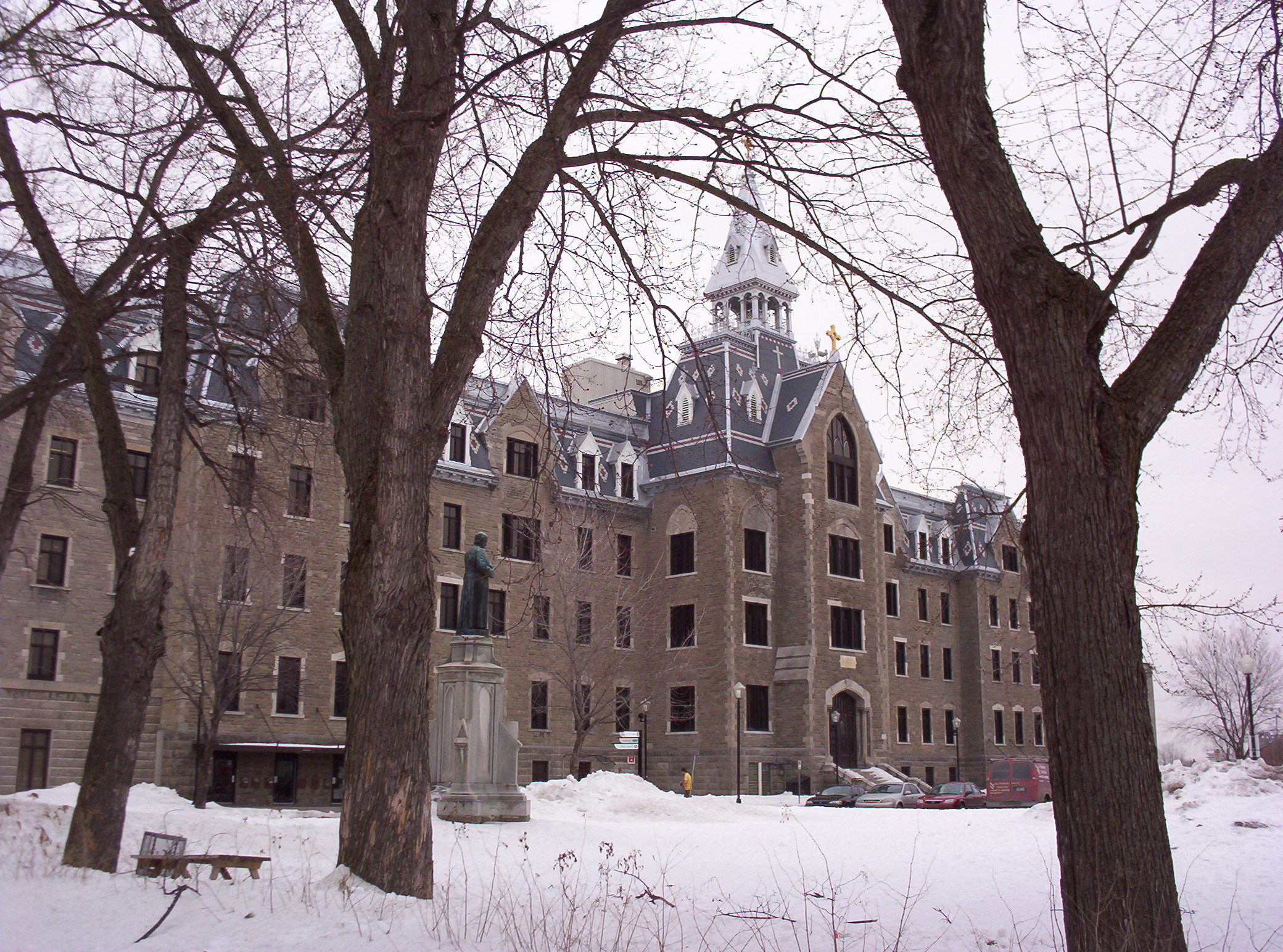April 7, 2019 7 min to read
College admission done right, how the SRAM and SRACQ made colleges equitable in Québec
Category : Education
Recently Lori Loughlin (Aunt Becky from Full House) and other celebrities were accused of corruption for giving money to help their kids get into college. This couldn’t happen in Montreal or Québec City.
Furthermore, a few months ago, Hassan Minhaj in the first episode of his show “Patriot Act” (on Netflix) discussed affirmative action in colleges, and a lawsuit brought by Edward Blum that those “quotas” discriminated against white students. He argued that this showed the real problem with college admission wasn’t “race quotas” but rather legacy admissions: that children of alumni were favored, generation after generation.
This in fact inspired part of my recent article on the cancellation of the French University in Toronto.
However, one important thing I should mention is that neither legacy admissions nor affirmative action nor corruption in the admission process could occur in Québec (at least, not in the Greater Montreal and Greater Québec City areas).
Problems with college admission
A good college admission policy needs to solve multiple problems:
- Ensure that all available places are filled with suitable candidates
- Help under-privileged but qualified students attain those places
- Prevent uncertainty in the admission process (in other words, reduce the number of people on waiting lists)
How it is dealt with in the USA
Each student needs to apply to as many colleges and universities as they can, in the hope of securing a good guaranteed place, or at least to be at the top of waiting lists.
An essay is typically sent to try to convince the college or university of the merit of the application: for example, one college might value creativity, another emphasize tradition, and yet another favor poorer students. The essay aims to help students who have lacked good fortune or opportunities to compensate for lower scores with a touching story.
As mentioned above, affirmative action helps students from poorer minorities get into college. Certain athletic programs can also bypass the normal process (this is what Lori Loughlin allegedly did apparently: give money to get her daughter onto the rowing team, so she would be admitted outside of the normal process).
How it is dealt with in SRAM, SRACQ and SRASL
In Québec, when you are in your final year of high school, most students going to college need to register with either SRAM for $30 (for students going to one of the 35 colleges in the Greater Montreal Area), SRACQ for $39 (for students going to one of the 29 colleges in the eastern parts of Québec) or SRASL for $35 (for the students going to one of the 7 northern colleges).
Each of the 3 services have similar policies but I will concentrate on the one I am most familiar with: SRAM.
Once you register with the SRAM, you can, between January 15th and March 1st, make a single choice for a single program in a single college for the first round of registration for admission in the next September session.
The SRAM will, on March 2nd, compile your grades (see below) and send a single, calculated score to your college, as well as your preferred class options. They also get some of your high-school grades if the colleges have certain policies: for example, at my daughter’s future college, they ask for a 70% average in French.
They do not get your name, gender, current school, racial or ethnic background.
In theory, if they have 60 open places, they should accept the 60 students with the highest score, except for certain art programs which require a portfolio or an audition.
No essays are sent and no consideration is taken of the background of the student.
Why the system is genius
If you are accepted in the first round of admission, you are required to go to that college in that program for that region. You cannot attend another college or another program from the same admission program. This means that there are no waiting lists.
Every student knows after the first round if they were accepted or not, and 87% on average are accepted in their first round.
The second round then starts for the 13% remaining and they can apply to many programs which are still open, including “tremplin” (springboard) programs which are basically a 1 year college program where you can take remedial classes and get your foot into the college of your choice. In your second year, you can apply to the program you originally wanted “from within”, if your grades are now high enough (you even bypass the admission program since it’s an internal transfer).
A third round starts after the second one for those who still didn’t find a program, but if you fail in the 3rd round, you are not going to college in that admission area. By this stage, guidance councilors will have stepped in and recommended one of the many easy access programs with unlimited enrollment (like many of the springboard programs, which technically have no limits on enrollment).
However, students can get a good idea based on their high school score of whether they have a good chance of being accepted or not. My only friend in high school who wasn’t accepted in the first round was trying to get into a highly limited enrollment program, for which he knew he didn’t have the grades to get in but tried anyway. He found a good program in the second round. Same with my daughter’s friends: almost all got into their first choice a few days ago, and those who didn’t were aiming for programs where they knew they didn’t have much chance.
No one is on a waiting list… by the end of the 3rd round, all of the students will know where they will be going to college, and according to SRAM, 98% of students trying to get admission do find a program and college by the end of the 3 rounds, regardless of their grades!
Think about that… imagine a world where 98% of high school students who want to go to college get admitted. Please note that the 2% includes students who don’t even bother participating in the 2nd or 3rd round, and also includes students who participated in another regional admission area since the 3 programs do not coordinate with each other.
How the high school score is calculated
Instead of giving places to underprivileged students who perform well despite adversity, the high school score is used to compensate for school quality. Instead of using actual grades to rank students, this score is used, and this is how it works:
First, they calculate the average score of the candidate for their 4th year of high school and the 1st and 2nd semester of their 5th year of high school (the 3rd one not yet being complete). Each of the 3 components are worth 1/3 of the score for this section, but this section is only worth 40% of the total score.
To calculate the score, the “weight” of classes is taken, so that French and Math have a higher weight in the calculation than other classes.
Secondly, they give bonus points for students who are higher than their class average: this greatly helps underprivileged students who attend under-performing schools, since it compensates for lower scores in Ministry of Education exams.
Thirdly, the score is adjusted according to the requirements of the program to which the student is applying: a program heavy on science will give more importance to Physics and Chemistry, for example.
Finally, students are given bonus points according to the number of units they are about to complete, up to 16% bonus for a full-time student. This is to prevent students from dropping classes which are not required to get their high school diploma in order to concentrate only on those which are.
But what about minorities?
Students from a poor sector might have a sub-standard education (thought this is much less of a factor in Québec and the rest of Canada compared to the USA), but the fact that high deviation from the standards gives bonus points helps high-performing students from under-performing classes.
The fact that colleges publish their admission criteria in advance and then use an purely mathematical method for admission allows you to make a better choice in the first round.
Colleges end up in competition for different types of students, with many colleges offering the same program in the same area: a student who wants to study computer programming but who doesn’t have the grades for it can try to pick a college which tends to admit students with a lower score, perhaps because it is less popular or perhaps because it offers fewer in-demand options.
Admission to colleges is also in decline today as the population is aging, and this helps students with lower grades get access to colleges which used to reject students but are now struggling to fill their classes.
The system isn’t perfect; a few colleges tend to attract certain minorities and some are still a little elitist and tend to mainly attract students from private schools. But overall, it is relatively fair, especially when you consider that college tuition is free in Québec (not colleges, just the tuition… but overall, the costs are very low).

